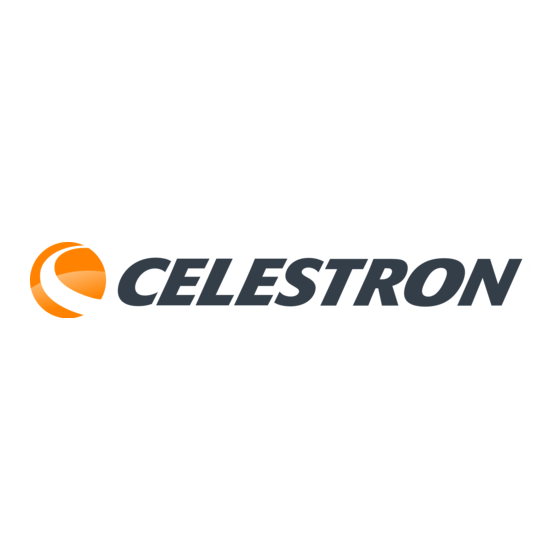
Advertisement
Quick Links
50mm Newtonian Telescope
#22014
WARNING:
sun. It will cause serious damage. Always use
your telescope under adult supervision
Thanks for buying the Celestron Kids STEM 50mm
Newtonian Telescope—a real, functional reflector telescope
with a revealing panel showing you the inner workings of a
reflector telescope!
Before using your telescope, take a few minutes to make
sure all the components are in the box and assemble
the scope.
Parts
A. Eyepiece
B. Telescope Tube
What is a Newtonian Telescope?
A Newtonian telescope is named after the famous scientist
who invented it—Sir Isaac Newton! Newton was one of the
most brilliant scientists in history. In 1668, while he was
figuring out gravity and learning about light, he also invented
a new kind of telescope. Instead of using lenses like earlier
telescopes, Newton used mirrors. This helped make images
less blurry and much clearer. His amazing design is still used
in many telescopes today, even after more than 350 years!
How does it work?
A Newtonian reflector uses a system of mirrors that gather
and direct light to your eye. The Celestron STEM Newtonian
50mm Telescope even has a removable panel, so you can
see the mirrors inside! Here's how it works:
Your eyes take in light to see things around you, and the
Newtonian telescope's mirrors help to gather more light
and make things look bigger. Light enters the telescope
tube through the open end and travels to the big mirror
at the bottom. This mirror reflects the light up to a smaller
mirror, which is angled to send the light to the eyepiece. The
eyepiece then magnifies the image, making the object look
much bigger and clearer before it reaches your eye.
Now that you know how it works, grab your Celestron Kids
Newtonian Reflector Telescope and start exploring! Point it
at the Moon or stars to see amazing details. And remember:
NEVER LOOK AT THE SUN THROUGH YOUR
TELESCOPE—it can cause permanent damage to
your eyes.
Never point your telescope at the
C. Tripod Assembly
D. Dust Cape
B
C
Sir Isaac Newton
LIGHT
Secondary Mirror
A
D
Primary Mirror
LIGHT
Advertisement

Summary of Contents for Celestron kids STEM
- Page 1 LIGHT much bigger and clearer before it reaches your eye. Now that you know how it works, grab your Celestron Kids Newtonian Reflector Telescope and start exploring! Point it at the Moon or stars to see amazing details. And remember:...
- Page 2 Celestron Starry Night Astronomy Software Celestron Starry Night, the premier astronomy software on the market, takes you on a guided tour of our Solar System’s past, present, and future. It can help you learn about the night sky and plan your next observing session. Use Starry Night to model exactly how the night sky will appear from your backyard, a nearby dark-sky site, or anywhere on Earth.















Need help?
Do you have a question about the kids STEM and is the answer not in the manual?
Questions and answers